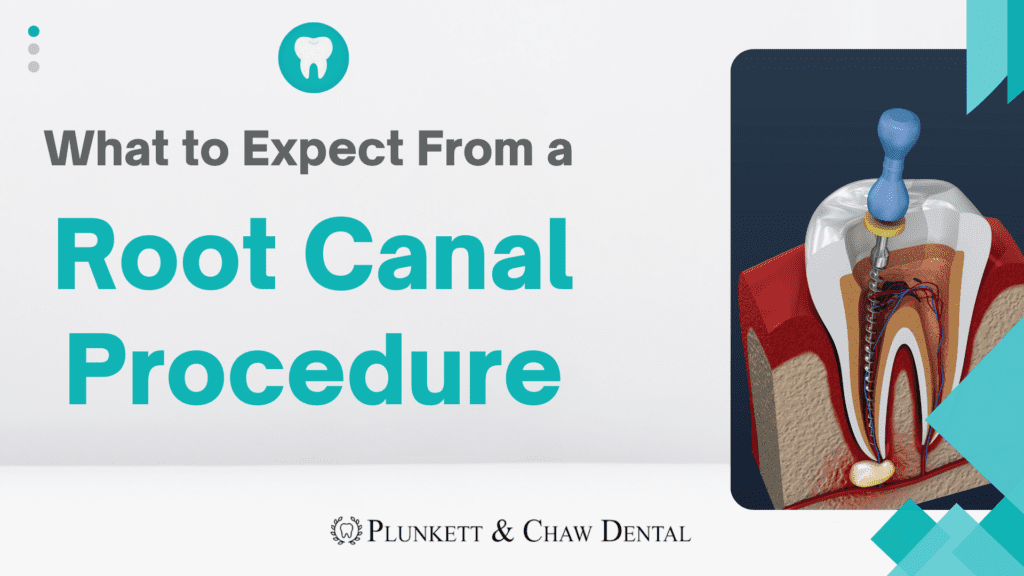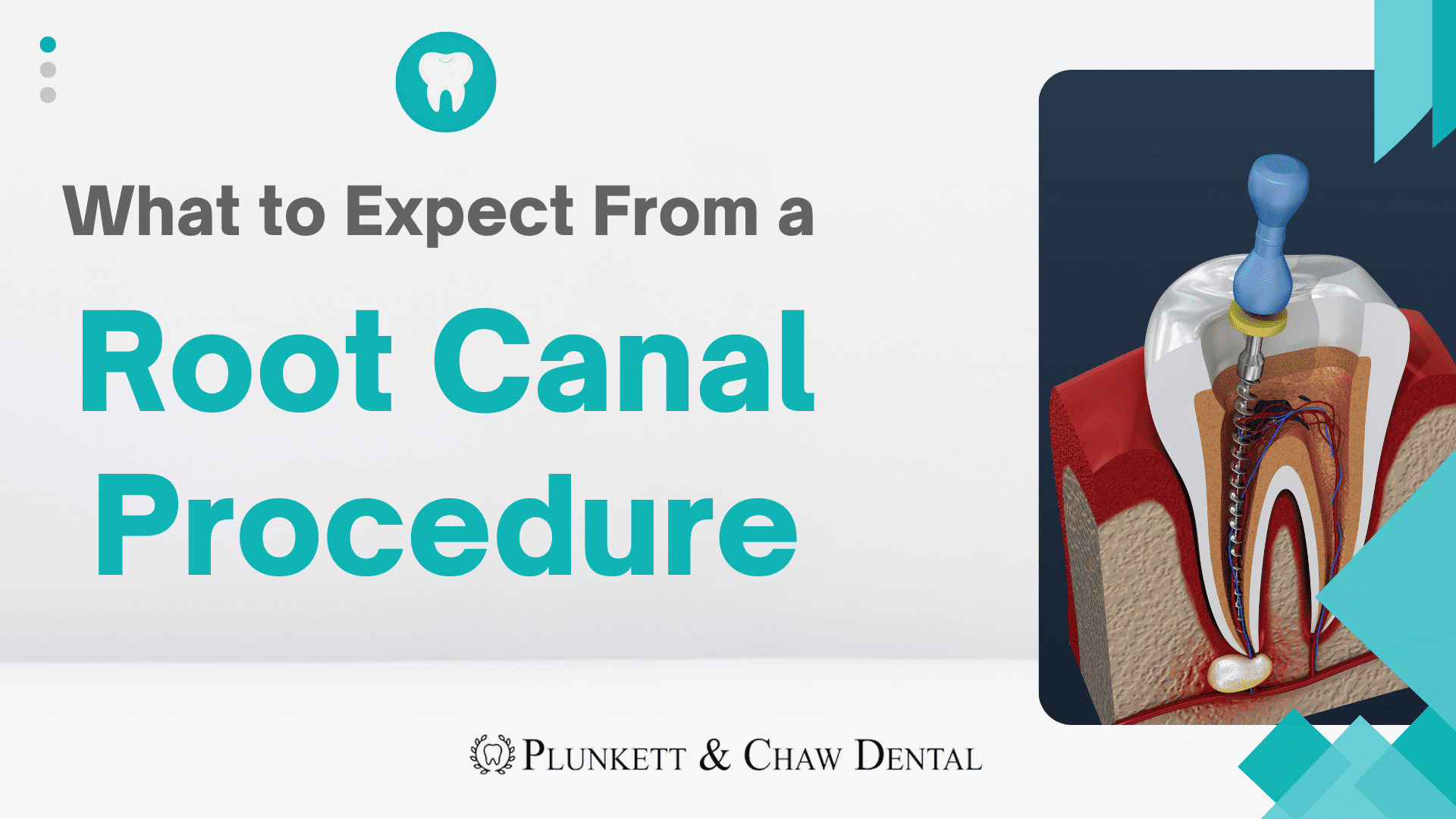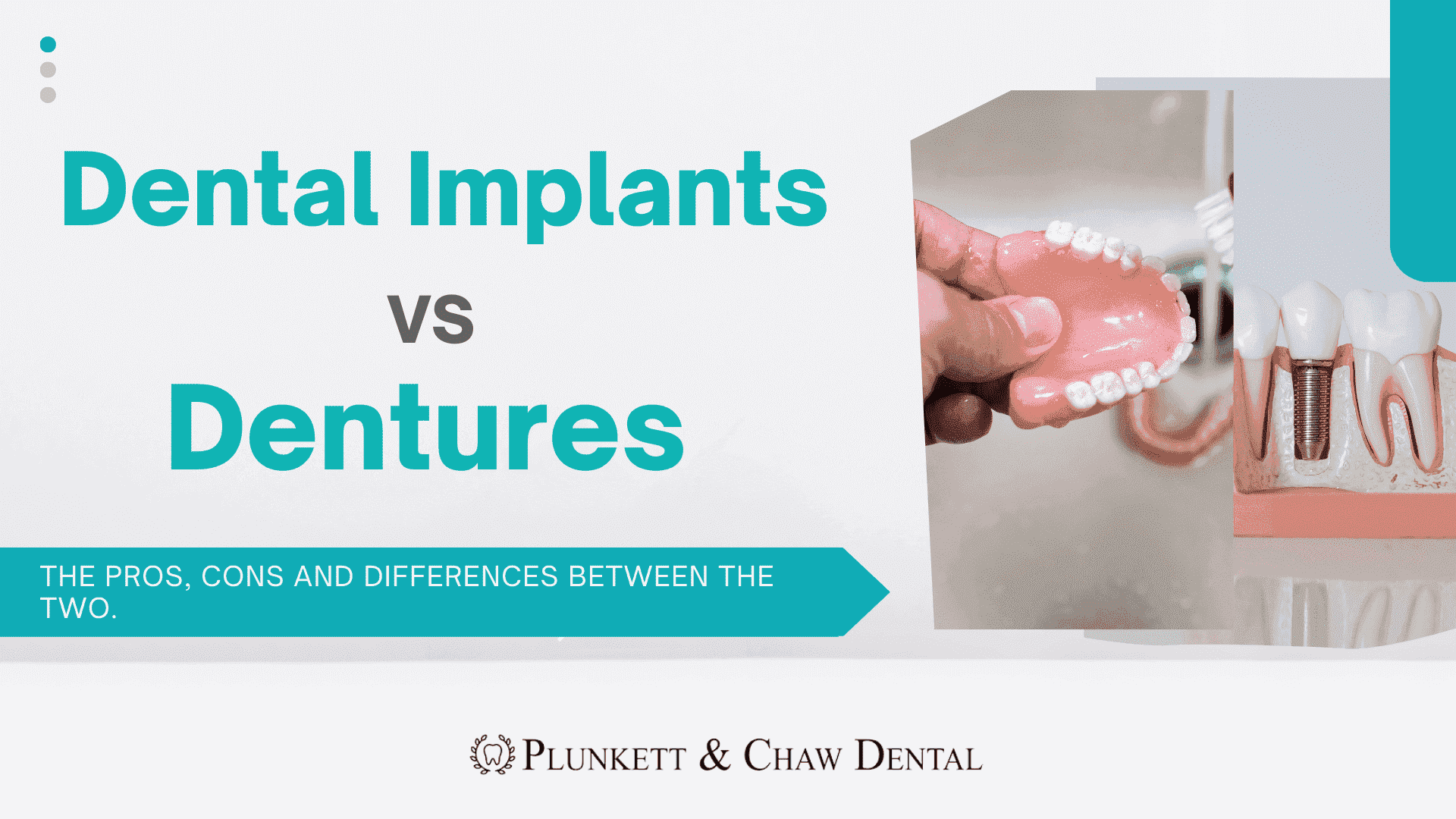
let's uncover what to expect from a root canal procedure
Whether you have a long history of great teeth or a not-so-stellar one, you’ve probably heard of a root canal. Now that you’ve been told you need one, though, you’re much more interested in the root canal procedure’s specifics and want to be prepared and to understand what to expect from a root canal procedure.
In the past, root canals have garnered a reputation for being painful and risky. With the advancements of modern dentistry, though, the procedure has been rendered virtually painless and recovery times are quicker than ever.
That said, there are still a few things you should know before you show up the day of your appointment. Details regarding how the procedure works, what it entails, and what (if any) aftercare is involved are all crucial tidbits you should read up on.
In this article, we’ll cover all of the above, plus provide a step-by-step overview of what to anticipate. Here’s what to expect from a root canal procedure:
What is a Root Canal procedure?
Root canals are considered the last-ditch care option for decaying teeth before extraction. It is generally saved for when a tooth’s pulp tissue (the deepest part of the tooth) becomes infected. At this stage, the tooth can no longer be saved by traditional methods like fillings.
Pulp tissue can become infected for several reasons beyond inadequate dental hygiene. Events like trauma or illness can easily cause someone to need a root canal procedure. That said, this level of infection doesn’t happen overnight.
Why Do I Need a Root Canal procedure?
Ultimately, it’s up to your dentist to determine if a root canal is the right course of action for your teeth. He or she will take a look at your x-rays and examine the tooth in person to make a final determination on whether a root canal is necessary.
Depending on what has caused your tooth damage, though, you’ve likely been experiencing symptoms for a while. Some of the tell-tale signs that a root canal might be in your future are:
- Swelling in the gums around the tooth
- General tooth sensitivity in response to food, drink, or temperature
- Severe pain while chewing
- Swelling in the cheek or jaw
- Pus discharge from the gums in severe cases
- Tooth discoloration
- A cracked or broken tooth
In most cases, just one of these symptoms doesn’t necessarily indicate the need for a root canal procedure (but are still definitely reasons to visit your dental practitioner). If you start experiencing two or more, however, you should make it a point to see your dentist immediately. The faster you address them, the less likely you’ll be to need a root canal or extraction. But if you do end up needing a root canal, keep reading to see what
How Does a Root Canal procedure Fix My Tooth?
Root canals target the tooth’s infected pulp tissue and aim to remove it. During the procedure, a dentist or orthodontist will carve into the center of your tooth from the top and use various tools to clean out any infected or decayed tissue. Once that’s done, your tooth will be sealed with a crown to prevent infection from recurring and to protect its sensitive nerves.
What a Root Canal Procedure Looks Like, Step-By-Step
A root canal is considered a minor dental procedure, and is relatively common. In fact, according to the American Association of Endodontists, over 15 million root canals are performed in America each year.
When you go in to get your root canal, you can expect the procedure to take between 30 to 60 minutes, barring any complications. Of course depending on your dentist, your health situation and the exact causes of your tooth problems, exactly what to expect from a root canal procedure may vary slightly. Here’s what will happen during that time:
- First, your tooth will be completely numbed using local anesthesia. Your dentist will use a long, thin needle to inject a numbing agent into strategic places inside your mouth. This will numb the area around the tooth as well as the tooth itself so you don’t feel any discomfort during the procedure.
- Next, your dentist will drill a small hole into your tooth’s root chamber to expose the canals inside. This will help them better determine where the infection is located and how best to clean it out.
- Your dentist will then clean out the infection. Using a series of specialized files, all of the infection in your tooth’s pulp tissue will be cleaned out. During this step, it’s common to experience unpleasant odors, as this is the decaying tissue inside your tooth being removed.
- It’s time to reconstruct your tooth. Once the dental professional performing the procedure has completely emptied the tooth of decaying tissue, they will begin to smooth out and reshape the canals. Then, they will go back in with a biocompatible material to fill in and seal the canals. This will protect the tooth from any further damage or recurrent infection.
- You’ll receive a crown. As the final step in the procedure, a customized dental crown will be placed on your tooth using a quick-harden material. A metal post may be used to anchor the crown in place.
Before it dries, your dentist will mold the crown to align with your other teeth. You may be asked to bite down to test the crown’s fit before it dries completely. If needed, they’ll make adjustments to the crown’s shape before completing the procedure. It will be firm enough to eat with when you leave the office, but it will harden completely over the next 24 hours.
Despite a root canal being one of the most dreaded dental treatment plans out there, getting one is actually a relatively painless process. If you do feel any pain or discomfort during any of the above steps, be sure to let your dentist know so they can provide you with more anesthesia.
Root Canal procedure Aftercare
Most root canals won’t hurt much, even after the numbing agent has worn off. Depending on your tooth’s condition, you may even feel better immediately afterward since your tooth no longer houses decaying tissue. Any discomfort you do experience as a result of the procedure can easily be taken care of using over-the-counter pain medication like Tylenol™.
After your treatment, it’s important to keep the area clean. Brush and floss around it like usual and avoid chewing directly on the tooth. It’s also in your best interest to eat soft foods for a few days to avoid aggravating the area and slowly reintroduce solid food as your comfort level increases.
All in all, your root canal recovery should take less than a week. If you have any severe pain or discomfort that lasts past a week, you should contact your healthcare provider as this can be a sign that the root canal has failed.
Don’t worry, though; this doesn’t happen often. Root canals have a 98% success rate.
Final Thoughts
If you notice any symptoms of a potentially infected tooth (such as swelling, pain, or bleeding) you should contact your dental professional immediately. The sooner we can locate and treat an infection, the better your prognosis will be. In fact, infections that are caught early on won’t require a root canal at all!
If you are scheduled for a root canal procedure, though, don’t worry. Modern medicine has come a long way in the past several years, so this method of treatment is completely safe and won’t cause much discomfort.
If you think you need a root canal or suspect an infected tooth and live in the northern Georgia or Atlanta area, don’t hesitate to contact us today to schedule your next dental checkup.
Remember: a healthy mouth is a happy mouth!
Excellent Team! Dr. Janice Chaw and her assistant were amazing. I was so comfortable the whole time, I fell asleep! Afterwards, I had no pain, and the work Dr. Janice Chaw did blended in beautifully with the rest of my teeth. I'm looking good again! Thanks, Dr. Janice Chaw!
Dr. Janice Chaw dealt with my very complex dental situation with great communication at every stage. She communicated with the specialist to coordinate my care. I felt as if she treated me like I was family, with constant updates. I am so happy to have her as my dentist. Together with Dr Plunkett, they are a great team. The office feels so cozy and warm. Lou at the front desk has the warmest smile when you enter.
I have been a patient of Dr. Plunkett's for over 20 years and have experienced everything from a simple cleaning to dental implants. Dr. Plunkett has done an excellent job taking care of all my dental needs in a very detailed, professional and caring manner. His attention to detail is excellent, always explaining procedures to his patients in great detail. His follow-up post treatment is a lost art in the dental and medical professions, and just further demonstrates his commitment to his patients. Over the period of time that I have been in Dr. Plunkett's care, I have come to consider him a friend! There is no stronger endorsement from a patient.
I am so pleased with the dental care I have received by Dr. Lee Plunkett and his team for several years.
Dr. Plunkett told me exactly what procedure was needed and delivered awesome results! The Team is excellent, they assured quality and comfort to meet all my needs.
Dr. Plunkett and his Team are always thoughtful, kind, considerate, friendly and totally professional! Dr. Plunkett calls each evening to check on you if you have seen him for a procedure that day!
Our smiles are better with Dr. Lee Plunkett in charge! We have been patients since 1983!
Dr. Plunkett has been my dentist since 1981. He always has a Team of very professional abilities and pleasant demeanor. Dr. P. is thorough in his assessment and treatment of my dental care. His kindness and dedication - and his smile and sparkly eyes! - make for a a wonderful experience at the dentist office
Even though I moved 5 hours away 11 years ago, I still make the trip to have Dr. P. and his Team care for my dental needs. They can not be beaten!!!
As a nearly 20 year patient of Dr. Plunkett, I can attest to Dr. P's utmost professionalism and his sincere interest in the well being of his patients. Furthermore, he surrounds himself with highly competent and friendly Team. They all make a great team. Simply put, I consider Dr. Plunkett to be the best dentist in Dunwoody and would enthusiastically recommend him to anyone looking for a dentist.
I have been a patient in Dr. Lee Plunkett's office for many years. He and his Team are very warm and friendly and extremely professional. Everyone makes you feel welcome the minute you walk into the office, which is always clean and inviting. The hygienists are very thorough, and you always leave with a sparkling smile. After your cleaning, Dr. Plunkett steps in to greet you and do a follow up check. If needed, an appointment with him can be schedule for further treatment. He is very competent, patient and explains procedures being performed during your visit. Dr. Plunkett and his Team focus on your receiving the BEST care, being COMPLETELY satisfied and having a PLEASANT experience while in their care.
I am happy to continue my praise of Dr. Plunkett and his friendly, courteous and helpful Team. Never before going to Dr. Plunkett had I ever felt good about visiting a dentist. I was so impressed after my initial visit. In all my many years of regular dental visits have I ever encountered a dentist who performed such a thorough exam. He is never in a rush and always so pleasant, efficient and professional. His knowledge of the latest up to date dentistry studies and techniques are always amazing. He is truly a perfectionist in his dental practice and I cannot sing his praises enough. I have referred several friends to him and they are just as pleased as I am.
Wonderful, friendly, caring, thorough. Front desk Team are always charming and helpful. Always available for emergencies. Great political discussions
Not only have I been a patient of Dr. Plunkett's for 20+ years, I also served as his dental assistant in the early 90's. At a time when most dentists were moving to increase their patient load, Dr. Plunkett focused on patient needs and has found a way to keep up with new dental technology without having a negative impact on patient care. His skills as a dentist are exceptional and well above the average. He is meticulous in his execution of all dental procedures and has a caring well trained Team. For example, his knowledge of implants , the dentists he partners with, and the lab he uses in concert produce a high quality choice for dental care. If your primary concern in a practice is a high level of competence and over the top patient care you would be well served by Dr. Plunkett and his team.
"Two words come to mind when I think about Dr. Plunkett and his team: thoroughness and caring. In a medical age where both of these traits have eroded, Dr. Plunkett continues to be an 'old school' professional."
Dr. Lee Plunkett has been my dentist for over 25 years. Once I found him, I knew it would be for life. I no longer live in Atlanta, but he remains my dentist. Being a perfectionist isn't always a good thing. It doesn't always serve a person well in some careers. But a dentist? Don't we all want a perfectionist? Let's face it, there's not much 'room' for error! Dr. Plunkett is conservative with his care, but thorough. He does what is best for teeth, not him. He is honest and forthright. The team of hygienists, assistants and office Team he has always served me well. They and Dr. Plunkett are always welcoming and have smiles on their faces. The dentist's office isn't our favorite place to spend time. But, this group makes it almost a pleasurable experience! (And, I'm not easy to please!)
My wife and I have been regular patients of Dr. Plunkett for over 30 years. We like Dr. Plunkett's professionalism and openness in working with our dental needs. He does an outstanding job of advising us on how to care for our dental health over the long term. With the addition of Dr. Janice Chaw, we can count on having excellent dental health care for years to come. We would highly recommend Dr. Plunkett and Dr. Janice Chaw if you are looking for an outstanding experience from dentists who care about you.
I highly recommend Dr. Janice Chaw as a family dentist. We were visiting family in Atlanta, when I chipped a tooth. I was wary about going to a unfamiliar dentist in the South (I'm from California) due to concerns of quality of service and also sterile environment--as a physician, these are especially important to me. I found out about Dr. Janice Chaw thru word of mouth from a friend. I found the radiant recommendation to be true. Dr. Janice Chaw was very friendly with great rapport. Additionally, she was very patient, professional, and thorough about discussing the risks and benefits of various procedural options. Most importantly, she wasn't pushy. I did not have the sense that she was trying to get more money out of me by suggesting additional expensive procedures. She simply added "when you go back to your dentist in California, you should consider these additional procedures." I don't know why she doesn't publicize this but she also worked as a pediatric dentist helping disadvantaged children in the public school system in Philadelphia for several years and also did a residency in Dental Public Health at the (CDC) Center of Disease Control in Atlanta prior to joining her current practice--both of which adds to her resume as a dentist who goes above and beyond the norms.
I have been a patient of Dr. Plunkett's for over 10 years and have been so pleased with the care he has given me. I especially appreciate that he always calls to check and see how I'm doing after any procedure, no matter how small. Up until recently, my children have gone to a pediatric dentist but I decided to leave that practice and give Dr. Janice Chaw a try. I'm so glad I did because she is a natural with children. She is so kind and makes my kids feel very comfortable during their exams and procedures.
One of the reasons I love this dental practice is because they take the time to get to know their patients. I highly recommend both Dr. Plunkett and Dr. Janice Chaw!




